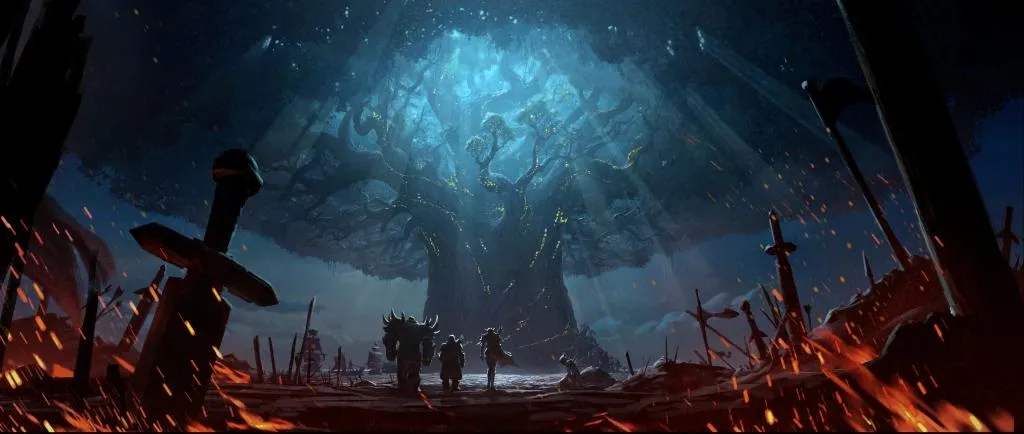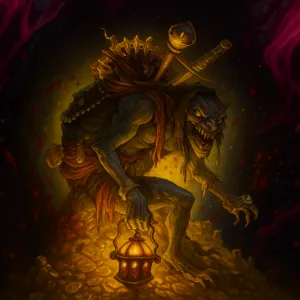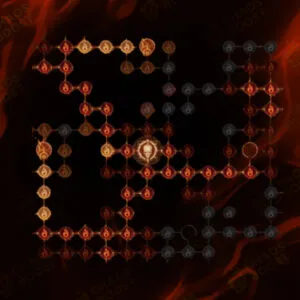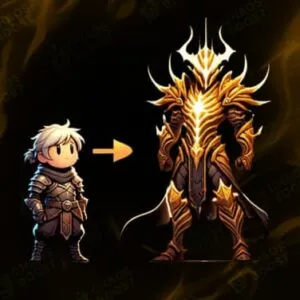Diablo 4 Season 7: Witch Tides, Witch Powers, and Rootholds
Season 7 in Diablo 4 brings a tidal wave of Witch Tides, mystic powers and ways to evolve your character. This season has twisted zones full of enemies, special dungeons called rootholds and a big system of witch powers fueled by dark rituals. Players are drawn to chase legendary drops, gather Restless rot in cursed places and find new ways to boost their class abilities. Fast leveling routes, lots of item drops and a solid late game loop has something for every kind of hero that ventures into Sanctuary. Below are the many details that make up this season of Diablo 4, why many players think it’s the most intense and rewarding one yet.
Season 7 Intro and Key Concepts
Season 7 is all about head hunt zones, new storylines with witch covens and powerful boons for character builds. These include a new type of Hell Tides called Witch Tides that flood the map with a green glow and force head-rotten monsters to the surface. Players dig through these cursed places to gather the elusive Restless rot, a currency to fuel unique seasonal powers. The story and open world progression is so intertwined that every quest gives direct rewards to building stronger characters.
Progression is tied to quests called Whispers that tie into multiple seasonal activities. These Whispers reward Grim Favors that eventually turn into big caches. The overlapping activities in each zone encourage active play, players must kill lots of enemies while unlocking powers, collecting heads and forging alliances with mercenaries. All this forms the foundation of Season 7, and sets the stage for the deeper features below. Season 7 feels like a big step up for Diablo 4, with revised loot tables, new dungeons and a big system of class powers. Fear is in the air as giant rotting creatures roam far and wide and ominous tomes foretell even greater dangers. Those who dare to persist find that clever use of new powers gets you unstoppable in both mid and late game. The synergy between story quests and open world activities shows how each part enhances the overall experience.
Fast Leveling Routes for the Witchcraft Season
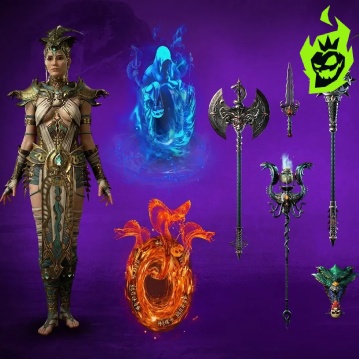
Fast leveling is an attractive concept for those who want to get to T1 or T4 quickly. Going from level 1 to 60 in 3-4 hours sounds crazy but players who use Whispers efficiently and cycle through the right zones find it’s not impossible. The keys are planning, movement and focusing on activities that give maximum Grim Favors or experience. Killing large clusters of head-rotten enemies, looting their bodies and turning in repeated Whispers is the core of success.
Many players recommend starting on normal until around level 20 then switching to hard once they feel their damage is scaled. Doing so gives a balance of easy monster kills and better rewards. The leveling path is the first wave of story missions plus frequent teleports to any active Witch Tide zones to collect new Whispers. By stacking multiple Whispers at once players can multiply the effect of every kill.
Below is a table that outlines a conceptual path for fast leveling:
| Level Range | Recommended Difficulty | Core Activity | Time Estimate |
|---|---|---|---|
| 1 – 20 | Normal | Early story quests + basic Whispers | ~1 hour |
| 20 – 30 | Hard | Seasonal Whispers + Witch Tides | ~45 minutes |
| 30 – 50 | Hard | Focused farming in multiple zones | ~60 minutes |
| 50 – 60 | Hard / Torment 1 | Head hunts + roothold keys farming | ~60 minutes |
Leveling in this way involves toggling difficulties as gear improves. Some classes can clear group packs in a fraction of the time but each class has ways to stay competitive. The main difference is the approach to skill synergy and building top tier items from early seasonal caches. Those who get to level 60 quickly get access to T1 and ancestral item drops and higher quality loot caches.
A fast run to T1 allows players to get the best gear, skip unproductive tasks and explore advanced areas like rootholds and nightmare dungeons. The feeling of progression is still there as each new item supercharges damage and survivability. These fast leveling routes help groups of friends or solo players sync up their progress so everyone can experience the core of Season 7 at a blistering pace.
Witch Tides, Head Hunts and Grim Favors

Witch Tides cover parts of the Diablo 4 world map, filling them with scary enemies and environmental hazards. Green lighting warns players that these areas are infested with head-rotten creatures, each dropping Restless rot on death. These areas move over time so pay attention to the world map. By visiting every active zone players get multiple Whispers that reward Grim Favors which stack up for big loot turns.
The best approach is to find Whispers that overlap with each other and use them to complete at the same time. For example the Shepherd whisper tasks players to find lost critters and guide them to a tree, while the Purge the Rot whisper just requires killing a set amount of enemies in that area. Completing these Whispers simultaneously speeds up the gain. This is the core of the head hunt as venturing across multiple overlapping tasks gives huge experience bursts. Below is a table of common Whispers, their Grim Favors reward and a quick tactic summary:
| Whisper | Grim Favors | Core Objective | Strategy |
|---|---|---|---|
| Fugitive | 5 | Spawn a head-rotten husk and defeat it | Locate once per zone for optimal time management |
| Shepherd | 3 | Escort small animals to a mystical tree | Minimal effort if done during natural zone traversal |
| Wisp | 3 | Collect drifting orbs and deposit them | Might be time-consuming if no synergy with other Whispers |
| Entangled Villagers | 1 | Free humans from vine traps scattered in the area | Low payoff, skip unless directly on the path |
| Patrol | 3 | Escort a wandering guard and defeat waves of monsters | Great in small zones where spawns cluster more efficiently |
| Scour | 3 | Gather herbs within the designated area | Tricky in groups because the herb count is individual |
Completing Whispers gives Grim Favors and once enough are collected (usually 10) a quick trip to the Raven of the Tree or the central tree of Whispers gives a high value reward cache. Some caches guarantee at least one ancestral or legendary item in T1 or beyond. The loot, Restless rot and synergy with the season’s story makes these hunts appealing well past the early leveling phase.
Witch Powers: Unlocking Arcane Potential
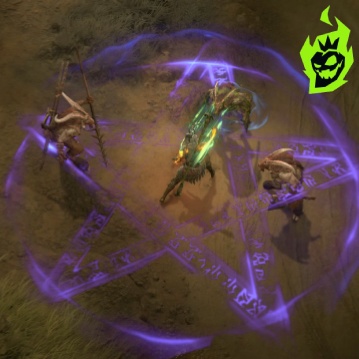
Witch powers are the thematic core of Diablo 4 Season 7, allowing players to tap into a twisted brand of magic that complements their class skills. These powers are purchased with Restless rot at the tree of Whispers hub area. At first only a few powers are available but as the story progresses more become available. Some like Doom Orb scale purely with character level and are a flat damage booster early on. Others are area of effect curses or defensive buffs.
One of the nice things is the existence of “unique powers” that cost more Restless rot and require finding special altars in dungeons. Examples are Pinado, which summons a swirling vortex of magical energy, or Hex Specialization, fueling specific builds around curses. The powers are upgradable and each upgrade rank might increase damage, reduce cooldown or unlock a synergy that changes the effect. Some rank thresholds unlock new mechanics altogether, showing the layered progression.
The table below showcases a sample of these witch powers and their corresponding effect categories:
| Power | Cost (Restless rot) | General Function | Upgrade Focus |
|---|---|---|---|
| Doom Orb | 100 | Massive floating orb dealing flat damage | Increase orb radius and damage |
| Aura of Siphoning | 25 | Health leech aura damaging nearby foes | Boost leech ratio and radius |
| Fire Bat Servants | 25 | Summons fiery bats that periodically strike | Improve base damage output |
| Pinado (Unique) | 100 | Whirling tornado of energy pulling enemies | Amplify pull force and damage |
| Breath of the Coven | 25 | Releases toxic vapors around the hero | Add secondary poison over time |
Witch powers allow classes to play the game differently. A Barbarian might use Aura of Siphoning to offset heavy health loss in whirlwind builds, a Sorcerer might combine Fire Bat Servants with their existing fire synergy. The system encourages mixing class based passives with new curses resulting in powerful combos that melt enemies. Not all powers fit every playstyle so it’s good to experiment with different picks until the best set is found.
Unlocking arcane potential through these powers adds replayability to Season 7. Progressing through the story or exploring rootholds gives more Restless rot to upgrade. Each rank typically costs more so players must decide if they should invest in broad coverage by unlocking many powers or focus on a few to get maximum rank benefits. With each approach the thrill of customization remains a big draw in this dark magical season.
New Dungeons: Rootholds and Their Treasures
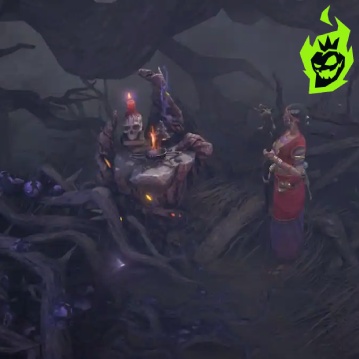
Rootholds are a massive addition to the Diablo 4 endgame. These twisted dungeons become available by getting special keys, often found in silent chests across Witch Tides or as random drops from certain events. Entering a roothold reveals branching paths filled with head-rotten creatures, walls of noxious growth and dozens of exposed rots with valuable loot and crafting recipes. Heroes find these places to be the best source of ancestral items especially at T1 or above.
Each roothold has two phases where players choose from multiple difficulty modifiers. These modifiers offer choices between “major reward,” “minor reward,” or an extra “exposed rot.” Major reward increases monster damage and health but yields more loot from boss encounters. Minor reward is less risky, extra exposed rot means more interactive growths that spill more items when destroyed. Two modifiers can be chosen during each phase, shaping a custom path that determines the loot density and quality.
The table below shows the progression inside a roothold, from entrance to final boss:
| Stage | Actions | Key Rewards |
|---|---|---|
| Entrance | Pick first 2 modifiers (Major, Minor, or Exposed Rot) | Initial boost to drop potential |
| Mid-Caverns | Fight waves of head-rotten enemies and open rots | Abundant loot & Restless rot |
| Second Choice | Pick next 2 modifiers to shape final encounters | Stacking monster difficulty bonus |
| Boss Chamber | Defeat the final husk or rotting monstrosity | Guaranteed ancestral item in T1+ |
| Loot Collection | Gather item drops, recipes, and leftover exposed rots | Large variety of gear and extras |
Rootholds can have random events or mini-bosses that add to the drops. The feeling of rummaging through tight tunnels, fighting cursed monsters and getting legendary items is often praised as the best of Season 7. Each run is different, especially with random layouts, boss variations or environmental hazards. This randomness keeps even repeated runs fresh and fun.
These dungeons are also a great source of Restless rot so they’re valuable for fueling witch powers upgrades. Many players wait until T1 or T2 to start farming rootholds seriously since the loot table is geared towards ancestral items at that threshold. With enough preparation a strong group can rush a roothold in under 10 minutes and get a mountain of gear. Even a solo player with a decent build can push these dungeons at a steady pace and get big leaps in character progression.
Occult Gems and Their Crafting
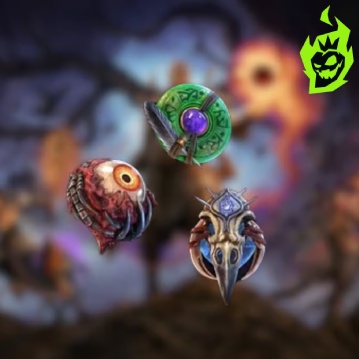
Occult gems add a new layer to item enhancement in Diablo 4 Season 7. These mystical stones fit into jewelry and grant stat boosts that surpass anything found in normal gem tiers. Players call them the final piece of the puzzle for a fully optimized build especially for high level content. Crafting these gems requires collecting special heads from head-rotten creatures that have an actual head (not headless) which is rare in T1 or above. The demand for these heads drives many groups to run multiple Witch Tides or rootholds to get enough resources.
There are several tiers of occult gems from blue to legendary. Blue ones might grant basic armor increases while the top tier legendary ones grant armor and elemental resistances that scale with level. The enchanting station at Galina the coven Jeweler is where players combine fugitive heads, Restless rot and lower tier occult gems to create a more powerful gem.
Here’s a table showing the typical occult gem progression path:
| Gem Tier | Ingredients | Approximate Stats | Best Usage |
|---|---|---|---|
| Blue Occult Gem | 1 Fugitive Head + Minor materials | +160 armor, +8% all resist | Early or mid-game ring slot |
| Rare Occult Gem | 2 Blue Occult Gems + Additional rot | +250 armor, +12% all resist | Advanced ring or amulet slot |
| Legendary Occult Gem | 2 Rare Occult Gems + Additional fugitive heads + higher rot | +320 armor, +15% all resist + unique effect | Endgame item for ring or amulet |
The crafting process is resource intensive so each gem is considered top priority for overall survivability. An amulet with a legendary occult gem can change the balance of a build, add the finishing touch to a synergy or make up for missing defenses. Many players find these gems essential for advanced content like T3 or T4 dungeons where the environment and enemy damage outpaces anything in lower difficulties.
Occult gems have the added bonus of scaling. As characters level up the static armor and resist bonuses remain relevant making these stones prime examples of an item that stays useful throughout the season. By the end of progression a hero with multiple high tier occult gems tends to shrug off hits that would have killed them before. This boost in effective health is a big part of what makes the Season 7 endgame so fun.
Mercenary Insights and Bartering Strategy
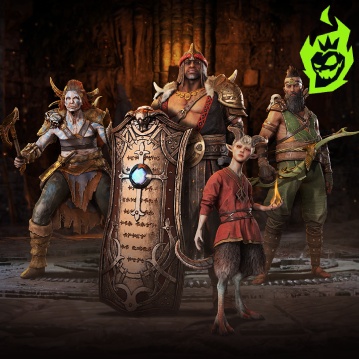
Mercenaries in Diablo 4 Season 7 have more roles that tie into the season’s dark witchcraft theme. A traveler visits the mercenary Den to hire loyal companions each with unique skills and leveling paths. As a mercenary’s rapport grows they eventually reach a threshold that unlocks special bartering options for specific goods. Swapping mercenaries regularly can give even more bartering options in the long run.
Mercenary Notes:
- Rapport Levels: Each mercenary gains rapport as they fight alongside a hero and eventually grant access to items like boss summoning tokens or currency pouches.
- Reinforcement Slot: Solo players usually recruit an extra mercenary while grouped players take one. With a bigger party the synergy can be huge especially if each member has a different mercenary.
- Currency Trade: Bartering currency is gained passively by leveling mercenaries. This currency trades for potions, materials or items that increase the hero’s power.
Rotating mercenaries often gives the player the most bartering options. For example a mercenary specialized in infiltration might eventually trade elusive keys while another trades powerful potions that increase resource recovery. The bartering station gets more active as the Season progresses and offers new and sometimes surprising deals that revolve around the Witchcraft storyline.Wrapping up with a mercenary plan means choosing the right companions for each build, rotating them until everyone is maxed and then focusing on the final one that complements that class. This synergy, rotation and currency yield is what Season 7 is all about. The presence of mercenaries adds a fun dynamic to progression and gives players more reason to explore new zones, kill big bosses and turn restless foes into valuable bargains.
Seasonal Blessings and Renown Rewards
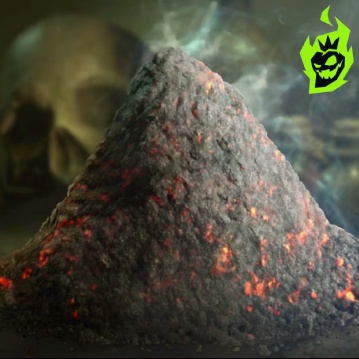
Seasonal Blessings are back in Season 7 with an added layer of importance due to the focus on speed and power. Players who collect Smoldering Ashes can unlock blessings that give experience gain, extra obal space for gambling or increase the rate of Restless rot collection. Since each blessing can be reassignable (for a gold cost) you can adjust your approach to fit your current goals. Early on players often choose experience blessings, later on they choose rot gathering or gambler expansions.
Earning Renown is also worth it as it gives universal skill points, potion charges and Paragon points at certain milestones. Renown accumulates from side quests, strongholds, points of interest and the seasonal questline. Since prior completions carry over from older characters new seasonal heroes will get extra skill points or gold from the get go.
Here is a table of the main Seasonal Blessings and their typical usage:
| Blessing Name | Effect | Ideal Timing |
|---|---|---|
| Urn of Aggression | Boost experience gain | Early leveling from 1–50 |
| Urn of Rot | Doubles the rate of Restless rot drop | Mid to late game after T1 access |
| Urn of Curiosities | Increases maximum obals for gambling | Opportunistic use before large gambling sprees |
| Urn of Masterworking | Raises crafting material drop rates | Useful when forging advanced gear frequently |
Choosing the right blessings makes a huge difference in how fast your character levels up and becomes powerful. This continues into the later stages where you swap from an XP boost to specialized resource accumulation. The result is a flexible system that adapts to the player’s needs whether it’s hoarding resources or seeking an immediate advantage in skill progression.
Endgame: Pit Runs, Infernal Hordes, and More
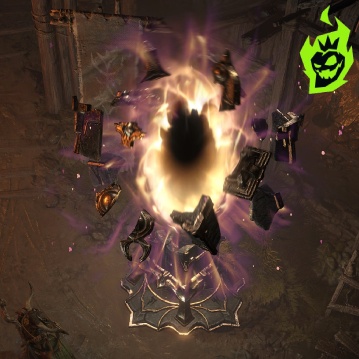
Once you hit T1 and beyond the endgame of Season 7 gets a lot more interesting. Heroes who completed the story, unlocked multiple rootholds and built synergy with witch powers have new choices to make. Some choose to run repeated nightmare dungeons, also known as “pits”, to level up their Paragon glyphs. Others dive into infernal hordes events which grant compass items that lead to structured challenges that reward unique gear or resources. Meanwhile rootholds are the best place for legendary drops and rank-up mats.
The standard approach is to rotate between these activities so none of them get stale. Pit runs give glyph experience and push characters to strengthen their Paragon synergy. Infernal hordes produce the materials needed to craft high end gear modifications while rootholds are the best place for consistent gear variety. Sometimes players do high level Witch Tides to get more head-rotten enemies for potential fugitive heads to craft top tier occult gems.
Here is the table comparing the three main endgame activities:
| Activity | Core Focus | Key Rewards |
|---|---|---|
| Nightmare Dungeons (“Pits”) | Leveling Paragon glyphs | Glyph XP, chance for unique item drops |
| Infernal Hordes | Summoned encounters using compasses | Masterworking materials, boss loot |
| Rootholds | Key-based dungeons with massive item drops | Legendary gear, Restless rot, recipes |
Players often comment that each activity supports a different part of endgame progression. Nightmare dungeons refine the hero’s Paragon node synergy, infernal hordes feed critical forging materials and rootholds yield lots of loot for repeated gear improvements. By combining these activities a well rounded hero ends up prepared for anything, from high end group play to the toughest boss fights.
In Season 7 these endgame activities are woven into the Witchcraft narrative so the sense of dread is present even in the highest level content. Head-rotten monsters show up in multiple areas, each with a seed of a new item or the fugitive head to craft a more powerful occult gem. This synergy between story, progression and itemization is a big win for the season.
The Final Word on Season 7

Diablo 4 Season 7 is all about dark magic, monster expansions and gameplay improvements. Witch Tides means the entire world map is cursed and every area has Whispers to complete. New witch powers give the hero new spells and abilities that complement or redefine existing class builds. Rootholds bring a new excitement to dungeon runs, making each infiltration an item gathering and risk taking spree.
Fast leveling players love how tasks stack with minimal waste, so a short burst of questing gets them past level 50. Methodical players get rewards from every corner of Sanctuary, find hidden altars that unlock Pinado and occult gems that are relevant throughout their journey from T1 to T4.
Season 7 is a world where darkness and opportunity go hand in hand. Players unite around the monster hunt, forging synergies between class and Witchcraft. Brave heroes who master these systems will be remembered as the greatest defenders of Sanctuary. Every head-rotten scream, every demonic haze and every ancestral gear found in the rootholds is a testament to the power at the heart of Diablo 4’s latest season.
